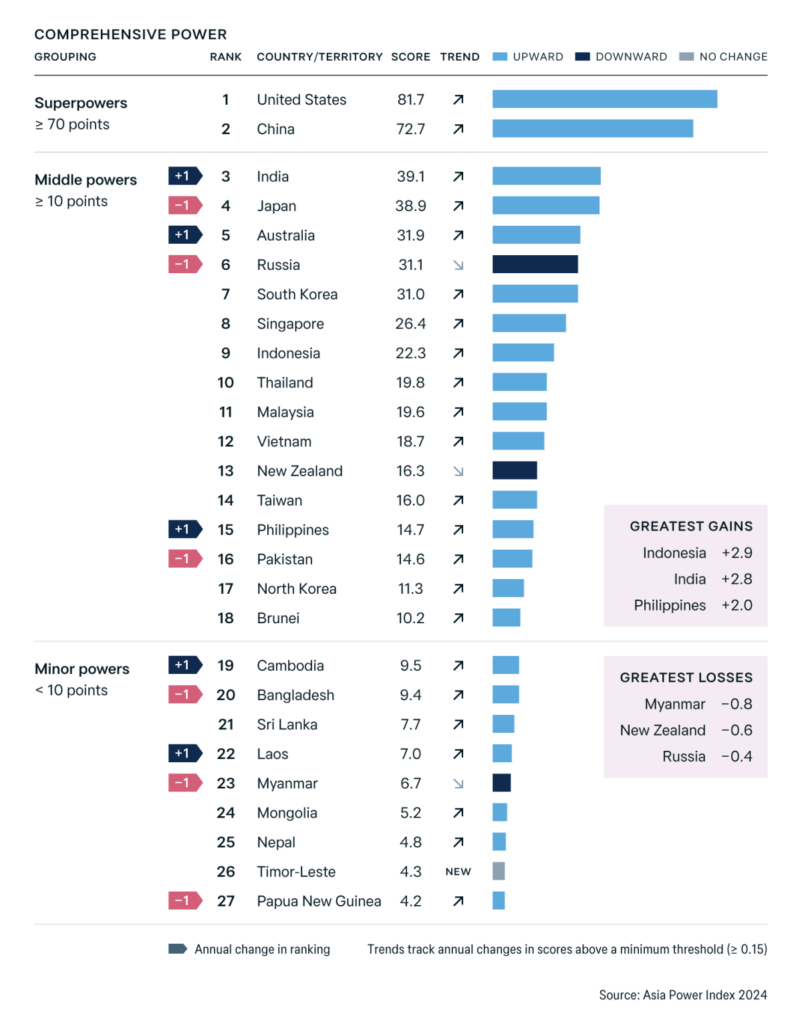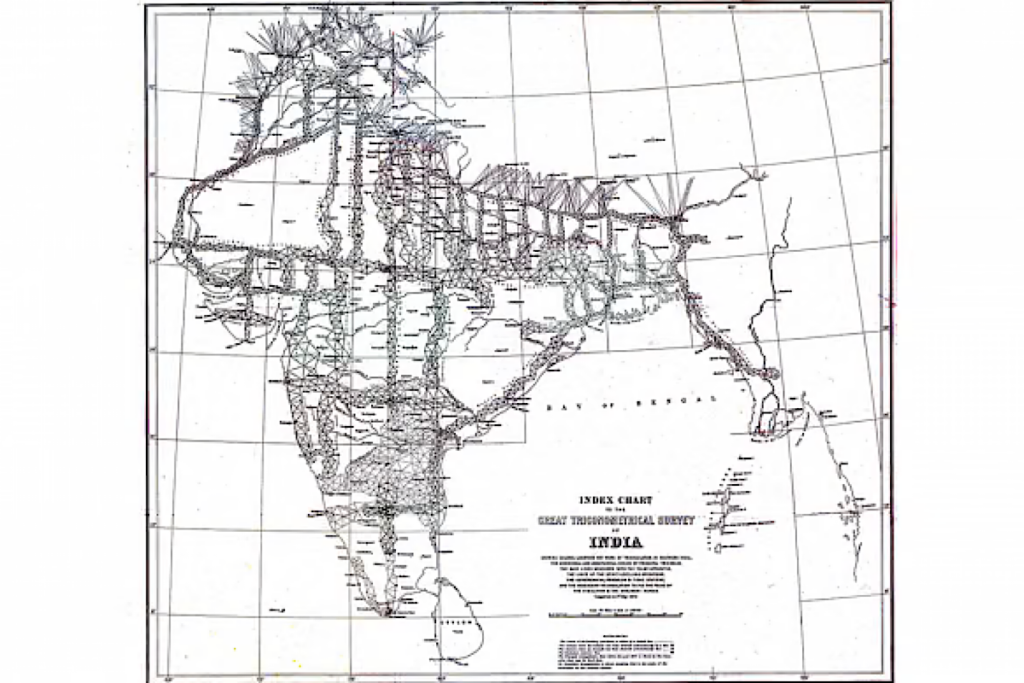India’s historic performance at the 45th Chess Olympiad 2024 caused a lot of huge changes in the rating list. Arjun Erigaisi is now World no.3. He gained 19.2 Elo rating points for his stellar performance on Board no.3. The World Championship Challenger, D Gukesh is now World no.5. He gained a whopping 30.1 Elo rating points. Both Arjun and Gukesh won double Gold. Vidit Gujrathi gained 6 rating points, Harikrishna 2.1. Currently, there are four Indians in top 12, five in top 22, six in top 33, seven in top 42 and eleven in top 98. Among the Women, four Indians maintain their top 15 places. IM Divya Deshmukh moved up to World no.11 and India no.2 among women after her fantastic double Gold medal winning run at the Olympiad. She crossed 2500 and her rating is now 2501. Another double Gold winning – IM Vantika Agrawal gained 22.1 and IM Tania Sachdev increased her rating by 10.2 points.
A fantastic month for the Indians, Divya Deshmukh crosses 2500, now India #2 among Women
September 2024 has been a fantastic month for the Indians. D Gukesh, Arjun Erigaisi, Vidit Gujrathi, Pentala Harikrishna, Divya Deshmukh, Vantika Agrawal and Tania Sachdev are the rating gainers. The highest gainer is Gukesh. Arjun Erigaisi climbed to World no.3. Two Indians in World Top five for the first time ever. Divya claiming the India no.2 spot among Women. Gukesh, Arjun, Divya and Vantika also won a double Gold at the 45th Chess Olympiad 2024.
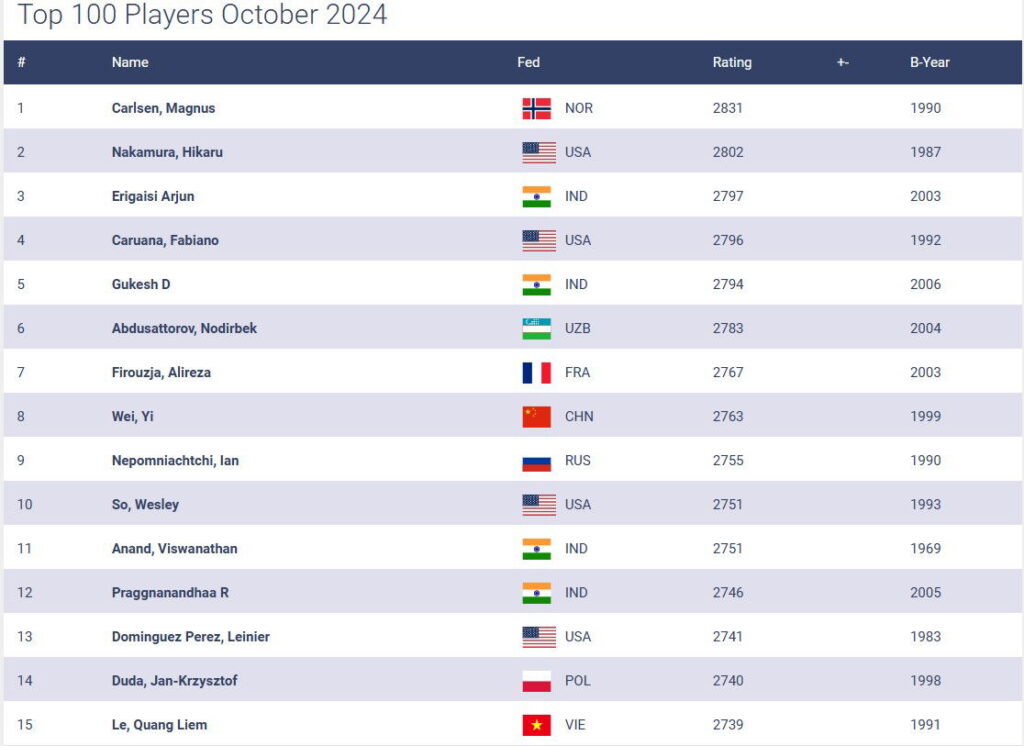
Arjun Erigaisi, D Gukesh, Vishy Anand and R Praggnanandhaa stay in World top 12 | Source: FIDE
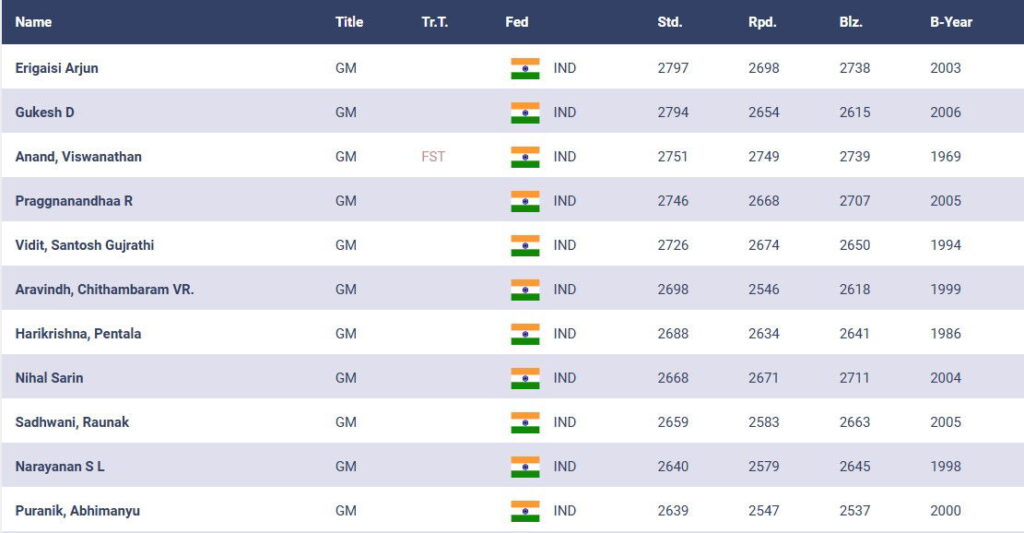
There are still eleven Indians in World Top 100 | Source: FIDE
Women: Four Indians stay in Top 15, Divya Deshmukh World no.11 and India no.2
Four Indian women maintain their place in top 15. IM Divya Deshmukh gained 17.5 Elo rating points at 45th Chess Olympiad 2024. Her stellar performance earned her an individual Gold on Board no.3. She also crossed 2500 and now has a rating of 2501. Her rank is now World no.11 and India no.2 among Women. IM Vantika Agrawal also won a double Gold at the 45th Olympiad. Her fantastic performance earned her an individual Gold on Board no.4 and she increased her Elo rating 22.1 points. Currently, there are nine Indians among the top 100 women.
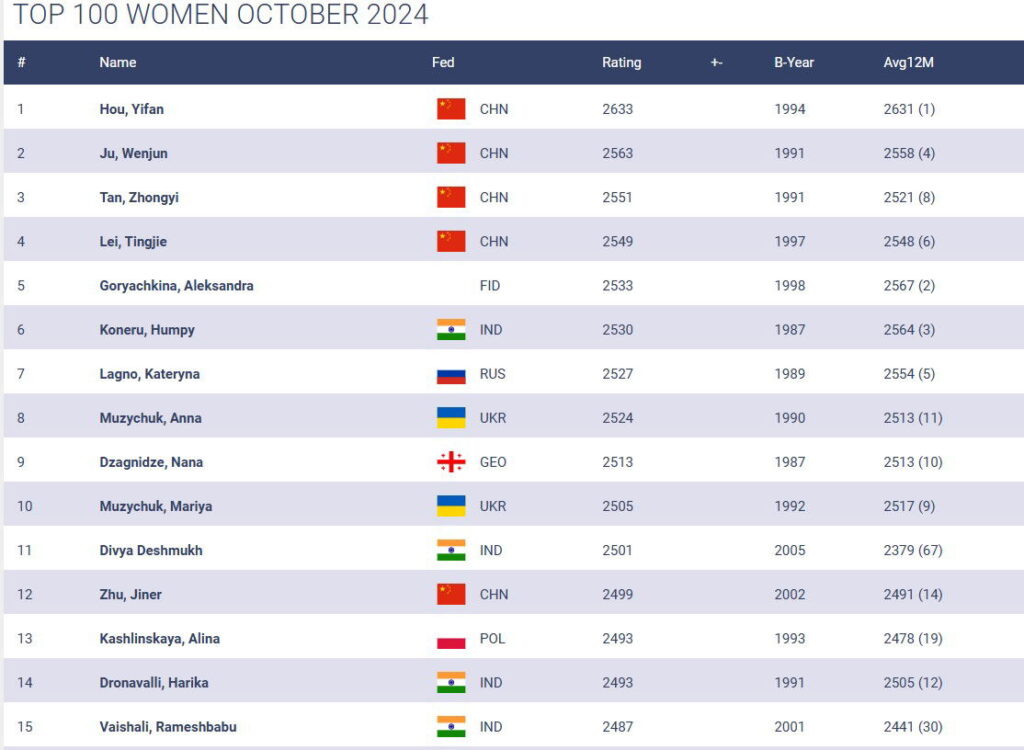
Four Indians in World Top 15 among Women | Source: FIDE
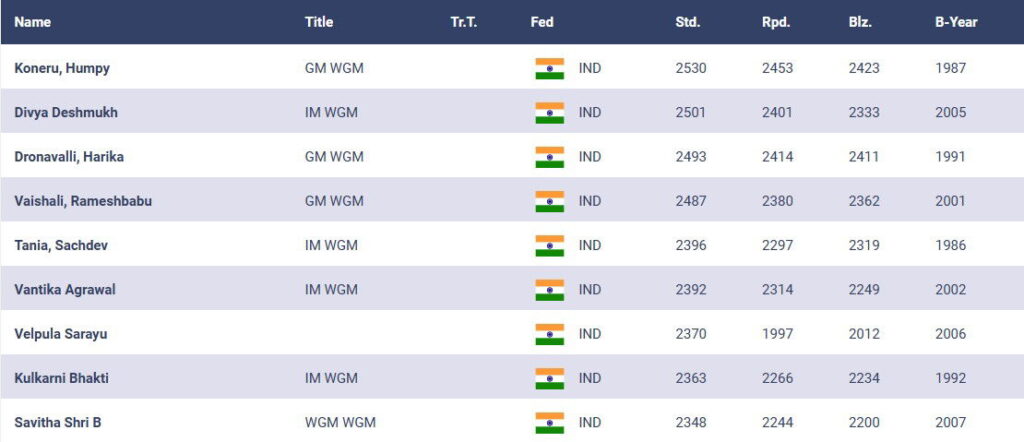
Nine Indians are among World Top 100 Women | Source: FIDE
Countries
India is still no.2 in October FIDE Rating list in terms of average rating of top ten players, 13 Elo rating points behind the USA. The gap between USA and India got reduced from 19 to 11 from September to October.
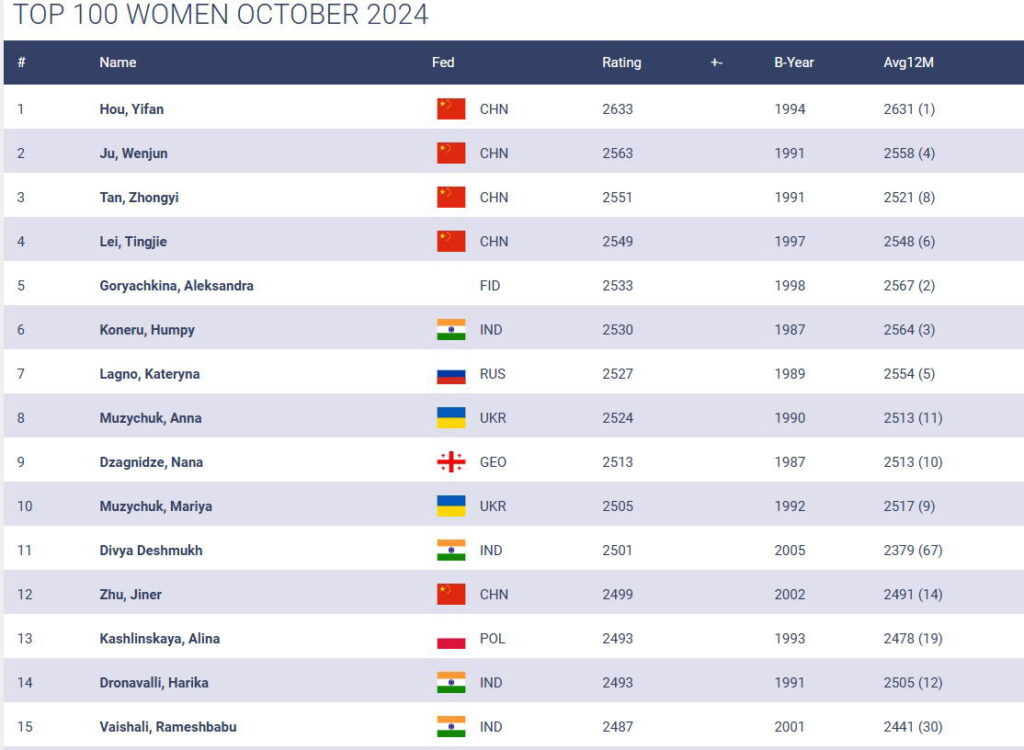
Four Indians in World Top 15 among Women | Source: FIDE
source/content: chessbase.in (headline edited)
